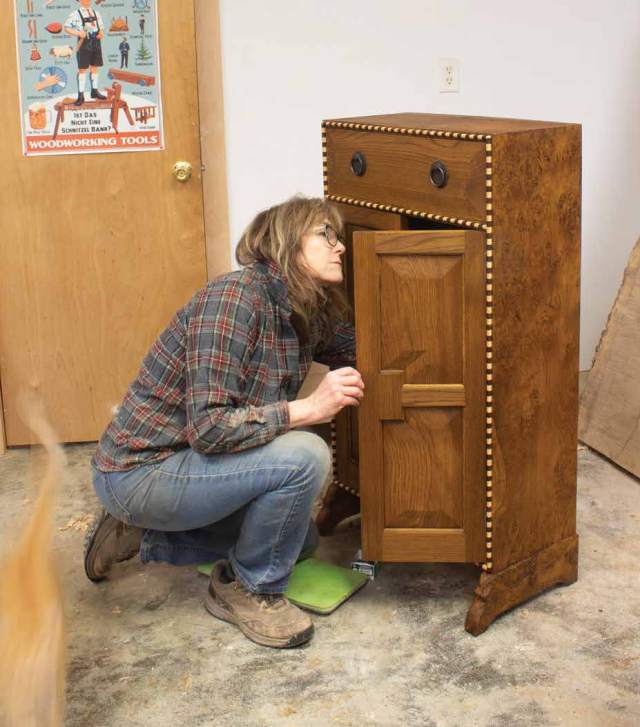
Note: If you’re planning on coming to town next month for our Chair Show and Open Day, here are some restaurants to try. There’s a reason Cincinnati is one of the fattest cities in the USA.
Megan and I often joke that next year we’re going to flip the script on our classes at the storefront. We’ll hold a week of great restaurant meals, and we’ll also build a little stool (just to say we did some woodworking).
We are obsessed with good food – if you’ve taken a class here you probably already know this. So *if* we ever did a food tour, here is what the itinerary might look like.
Monday
Breakfast: Sugar ‘n’ Spice in Over the Rhine. This is an old-school diner. Stick to the basics, and you’ll be thrilled: pancakes, biscuits, French toast, home fries and bacon.
Lunch: City Bird (any location). A local chicken chain, and the best. Get the chicken however you like it (ask for it spicy if you like spicy). Be sure to get fries. And the salad is outstanding.
Dinner: St. Francis Apizza in Hyde Park. On Mondays, St. Francis does Chicago tavern-style pizza. It’s a six-day process to make the thin and flavorful dough. Standouts: pepperoni and sausage, and the bacon pizza (with whole slices of bacon). Pick up your pizza and eat it at a table in the parking lot. Get some drinks at Dutch’s a few doors down.
Tuesday
Breakfast: Maplewood downtown. Everything here is tasty and fresh. I love the chilaquiles and the lemon ricotta pancakes. The juice is worth it. Hang out by the restaurant’s front windows and watch the world go to work.
Lunch: Eli’s Barbecue, Findlay Market. The pulled pork sandwich and the smoked turkey sandwich are mainstays. Get the jalapeno cheddar grits on the side, or the mashed potatoes (which get seared on the griddle). After lunch, tour the market and get a waffle at the Taste of Belgium stand. You can spend the whole day at the market and its surroundings.
Lunch (per Fitz): Eckerlin’s Meats, Findlay Market. The hot pastrami sandwich is the best I’ve had in Cincinnati in years.
Dinner: Northside Yacht Club. This is in Megan’s neighborhood, and damn is it good. Great burgers, wings, fries. And always check out the monthly special. It’s a dive bar with A+ food and drinks. It’s not fancy. The “yacht club” is a joke – the building is on an industrial creek. For dessert, go to Shake It records (also in Northside). One of the two best record stores in the city.
Wednesday
Breakfast: Brown Bear Bakery. Cincinnati is awash in amazing bakeries. Brown Bear is a family favorite. Everything I’ve ever had there (except one thing) was mind-blowing good. Great coffee. Great place to sit and watch the city.
Lunch: Olla. Just a couple blocks from our office, Olla is serious Mexican food. The birria (in all its forms) is mouthwatering. The best guacamole in the city. Fantastic tacos. And a great place to hang out with a margarita.
Dinner: Colette. A small French restaurant that continuously blows my mind. I have had everything on the menu. And I will have everything again. If I had to pick a few favorites… the brioche, the cod, the ravioli and the cote de boeuf. My favorite cup of coffee in the city, too.
Thursday
Breakfast: Young Buck Deli. Only two things on the menu. Both are great.
Lunch: Heyday. We talk about this place a lot. On any given day, I will say that Heyday has the best burger and the best fries. Friendly staff. Everything is fresh and perfect.
Dinner: Cafe Mochiko. My favorite Japanese place in town. Fantastic ramen, karaage and katsu sandwiches on milk bread (it’s a Japanese bakery by day). Even the damn burger will blow you away. And if you like Japanese pastries, this is the place.
Friday
Breakfast: Coppins. The restaurant in the Hotel Covington. This is where we take guests when they visit. Lots of good stuff to please everyone in the family. And a beautiful place to eat, too. If the weather is nice, sit outside in the courtyard.
Lunch: Sotto. Usually I recommend Sotto for dinner, but it’s difficult to get a reservation for dinner. So go for lunch. Everything – and I mean everything – on the menu is fantastic. Sotto is where we go to celebrate our victories or lick our wounds. The short rib cappellacci can change your life.
Dinner: Purple Poulet. A family-run restaurant with the best fried chicken I’ve ever had. Shrimp and grits. All the Southern specialties. And if you don’t get the bread pudding at the end, then you will have committed a crime against puddings.
The above itinerary wasn’t easy to put together. On any given day I’d instead insist that you go to the Eagle, Allez, Otto’s, the Baker’s Table, Nada, Boca, Taft Brewhouse, Decibel, Libby’s, Mita’s, Losanti, Senate, Nine Giant, Crown Republic or Taglio’s.
And Fitz would add El Camino, Teak, Kiki, the Pony, Gulow Street and Sacred Beast.
Maybe save those for next year.
— Christopher Schwarz
















